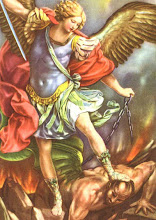Friday, April 16, 2010
Secret Gospel of Mark: Recent news
The Secret Gospel of Mark is attracting more attention, from rather different perspectives (cf. previously here and here).
Francis Watson has attempted to move from 'suspicion of forgery' to 'beyond reasonable doubt' in a paper published recently in JTS. This is an interesting read, and raises some questions, although occasionally it gets a bit ridiculous. To my mind it doesn't close the discussion.
Francis Watson, 'Beyond Suspicion: on the Authorship of the Mar Saba Letter and the Secret Gospel of Mark' JTS 61 (2010), 128-170.
Roger Viklund has posed some questions about Stephen Carlson's use of relatively poor photographs in his hand-writing analysis: Tremors, or Just an Optical Illusion? A Further Evaluation of Carlson’s Handwriting Analysis.
Scott G. Brown and Allan J. Pantuck have posed some questions about Stephen Carlson's use of an external hand-writing expert in 'Stephen Carlson’s Questionable Questioned Document Examination' here at Timo S. Paananen's web-site which is a good resource on SGM matters).
Up-date: The BAR have recently published an opinion on the Letter to Theodore by a "qualified" document expert (I use the quotation marks deliberately - check out the qualifications!) which opines that Smith probably did not write the 18th Cent. Greek text. Here. (It is not dated; hopefully it was not the first of April.)
Up-date 1a: Peter Jeffery comments on the hand-writing analyses here with discussion here.
Up-date 1b: Some questions are raised about the qualifications of the "expert" in the comments here.
Up-date 2: Surprise, surprise ... the other BAR expert (who seems actually to be an expert), apparently disagrees, but his report is not finished so you'll have to buy the next issue. See here.
What do I think? I wish I knew. Here is something I wrote recently:
M. Smith discovered a letter from Clement of Alexandria to (an otherwise unknown) Theodore written in an eighteenth-century hand in the back of a published book (see M. Smith, Clement of Alexandria and a Secret Gospel of Mark (Cambridge, MA: Harvard University Press, 1973) also ‘Clement of Alexandria and Secret Mark: The Score at the End of the First Decade’, HTR 75 (1982), 449-461). Among other things this letter mentions three expanded forms of Mark’s Gospel: the original Gospel, a secret gospel also written by Mark (on the basis of notes), and a further expansion used by Carpocratians (on whom cf. Irenaeus, Adv. Haer. I.25). If this was an authentic letter of Clement it would provide evidence for expanded versions of Mark known in Alexandria, and in the third case at least, the expansions would reflect the views of a libertarian sect. However, I consider this letter to be of doubtful authenticity – specifically on the grounds of its extremely late attestation, the uncertain provenance of the manuscript, certain stylistic questions about the relationship of the letter to Clement’s normal style (A. H. Criddle, ‘On the Mar Saba Letter Attributed to Clement of Alexandria’ JECS 3.2 (1995), 215-220), and the impression that the letter seeks to disclose the contents of the secret gospel (F. Watson), and the air of mystery which the original editor encouraged by his dedication of his book ‘to the one who knows’. I have not, however, found recent attempts to prove that M. Smith was himself the author of the Clementine letter (S. Carlson, The Gospel Hoax: Morton Smith's Invention of Secret Mark (Texas: Baylor University Press, 2005); P. Jeffrey, The Secret Gospel of Mark Unveiled: Imagined Rituals of Sex, Death, and Madness in a Biblical Forgery (Yale: Yale University Press, 2007); F. Watson, ‘Beyond Suspicion: On the Authorship of the Mar Saba Letter and the Secret Gospel of Mark’ JTS (forthcoming)) completely persuasive (cf. esp. S.G. Brown, Mark's Other Gospel: Rethinking Morton Smith's Controversial Discovery (ESCJ 15; Wilfrid Laurier University Press, 2005); ‘Factualizing the Folklore: Stephen Carlson's Case Against Morton Smith’ HTR 99 (2006), 291-327; ‘The Question of Motive in the Case Against Morton Smith’ JBL 125 (2006), 351-383; ‘Reply to Stephen Carlson’ ExpT 117:4 (2006), 144-149; ‘The Letter to Theodore: Stephen Carlson’s Case against Clement’s Authorship’ JECS 16 (2008), 535-572 and recently R. Viklund, ‘Tremors, or Just an Optical Illusion? A Further Evaluation of Carlson’s Handwriting Analysis’ http://www.jesusgranskad.se/theodore2.htm (accessed March 2010)).
--------------------------------------------------------------------------------
http://evangelicaltextualcriticism.blogspot.com/2010/04/secret-gospel-of-mark-recent-news.html
Iscriviti a:
Commenti sul post (Atom)



Graphology school of India is the place for the study of graphology, handwriting analysis.
RispondiEliminaHandwriting analyst